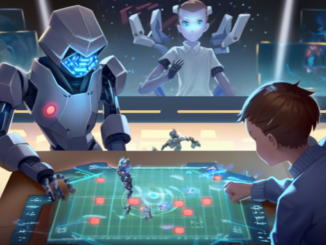
[Editor’s note -The Speculative Optimism project was launched in February. The first phase of the project is to produce a book of optimistic speculative fiction – and later there will be a collaborative community space to work on innovation and activism opportunities unearthed by the first phase, as well as an organisational learning programme. Participants are working through a ‘course’ which explores foresight techniques from the field of futures thinking, and writing craft. Some participants, like Evan, are already familiar with, or working within Futurist disciplines, and some, again like Evan, are already regularly writing speculative fiction. When participants were asked to share works of SF, written by themselves or from published works by other authors – Evan shared this piece.
Sex and the Pandemic
When COVID-32 started to spread in mid-May 2032, just 6 years after COVID-19 was mostly under control, people began calling it the Second Pandemic. This time, people were somewhat more prepared after having lived through the first disaster. Toilet paper stayed on the shelves and masks became popular again on the streets as people refreshed this familiar old habit from the past decade.
The difference this time was cybersex. After the initial despair of the Second Pandemic subsided somewhat, people realised a few hard truths. First, that one-way broadcasts of pornography weren’t satisfying the need for basic human connection, not even basic horniness. It was the equivalent of drinking soda for breakfast — sugary like orange juice, but too salty, sugary and artificial to ever satisfy a person without immediately needing more.

Second, that pandemics were a fact of life, making social contact a precious resource to be conserved under literal threat of death. Every in-person experience — a hug, kiss, flirty smile in your direction from across a room — all of these were more valuable than gold.
Third, video conferencing was a terrible way to communicate between human beings. For many professionals, video chatting was synonymous with the oft-maligned “Microsoft Teams” and memories of awkward pauses, uncertain conversations, and frustrated chat sessions hidden inside an incomprehensible dashboard of notifications.
Cybersex was nothing new, but it had never worked properly. One of the problems was the cost of developing a safe new toy and controlling it. There was a culture of home garage-tinkerers building sex machines powered by old lawnmowers and dismembered power tools, but networking them and making them programmable required a larger technological leap to cross. DIY hacker projects like [buttplug.io](http://buttplug.io) brought together groups of like-minded, kinky tinkerers over the 2020’s to build a serviceable foundation for Internet-native sex toys, spawning products that were often unconventional.
One such product was The Medusa, a multi-headed, soft-robotic toy outfitted with multiple fibre-optic cameras, lights, and screens. The original version looked somewhat like one of the evil robots from the Matrix movies if it got a haircut and took a side job as a friendly Christmas tree. The cameras and screens worked together to show a fractured view of interesting actions during “play” for all people involved in this networked dance of shared intimacy. The mood lighting kept it classy, of course.
Quietly, the Medusa, despite it’s off-putting name, became popular both on dating sites and apps but also on Instagram and Twitter. Normally this type of video would be censored, but the Medusa produced abstract-looking visuals that only other Medusa users could view properly, bypassing the protective algorithms. Instead of clamping down on this obscene violation of their TOS, in a move that was never publicly explained, Instagram (AKA Facebook) bought the Medusa and soon it was a sibling to the VR devices like Oculus Rift, already a part of Facebooks’ research division.
Not everyone understood the purchase, but AI researchers and privacy watchdogs figured it out almost at once. The executives at Facebook who snapped up the Medusa were closely aligned with both the AI and behavioural modeling research divisions. Facebook, like TikTok and other social media giants, was deeply invested in studying and attempting to predict (and manipulate) fundamental human behaviours. The ability to monitor intimate, sexual situations was a new frontier.

This wasn’t all about building an internal panopticon, however. AI researchers genuinely thought that AI-enabled sex toys had much to add to the experience of pandemic sexual intimacy and the Medusa was a perfect starting point. As it was, there were so many cameras and possible views that it was hard to control and stay focused on the tasks literally at hand. The default Medusa firmware had some heuristic settings for automatically cutting between “interesting” activities but it was often random and awkward and jump-cut to a random scene right in the middle of some intense action, spoiling the moment.
AI, and the Oculus research into understanding the human gaze, offered a way for toys to understand when people were genuinely in the moment and to help keep them there, or to build up and change before things got to repetitive. This was one of the most difficult tasks for an AI, akin to teaching it to be the conductor of an orchestra spread out over the world, linked together by shuddery web connections. It was a work in progress, but regular software updates delivered silently during off-peak hours kept improving the experience.
Soon other tech companies followed suit, shifting their resources from public-space-based technologies to home-based ones. It wasn’t long into the Second Pandemic before driverless cars were forced to take a back seat to orchestrated mass cybersex acts through the rise of InstagramAdult, Google’s IntimateHome and Apple’s iLover lifestyle brands and a constellation of smaller start-ups.
This article was originally published by Evan on Notion
- Sex and the pandemic - 15th March 2021
- The Mechanics of Plots in Peek - 12th March 2021





Be the first to comment